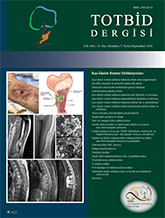
Osteoarticular infections have a distinct and a more severe disease course in neonates compared to older children and adolescents. Acute hematogenous osteomyelitis is the most common form, and the most frequently observed etiologic agents are Staphylococcus aureus, gram negative bacteria and group B streptococci. The metaphyses of long bones are the most common infection sites and infection may spread to the neighbouring epiphyses and joints. Diagnosis is difficult in neonates due to the lack of specific signs and symptoms other than pseudoparalysis. When clinically suspected, imaging methods, laboratory tests and culture samples are helpful. Antibiotic treatment should be given intravenously for 3–4 weeks, then continued orally. Surgical intervention should be performed in case of unresponsiveness to antibiotic treatment or abscess formation. Chronic non-bacterial osteomyelitis (CNO), formerly known as chronic recurrent multifocal osteomyelitis, is a rare condition commonly affecting metaphyses of long bones with negative bone and blood cultures and may cause diagnostic challenge in distinguishing from bacterial osteomyelitis. It is an auto-inflammatory bone disease that affects children in particular, characterized by periods of bone pain and fever, exacerbations and remissions. The pathogenesis is not elucidated. The disease is usually multifocal and symmetrical, but may also be unifocal. Although the metaphyseal region of long bones is the most commonly affected site, mandible, clavicle, pelvis and spinal bones may also be affected. Excluding bacterial osteomyelitis and malignancy is essential in making diagnosis. Wholebody magnetic resonance imaging and bone scintigraphy are helpful for detecting asymptomatic bone lesions. Non-steroidal anti-inflammatory drugs, corticosteroids, TNF-α inhibitors and bisphosphonates are effective in treatment. Majeed and interleukin-1 receptor antagonist deficiency syndromes are rare diseases that cause noninfectious osteomyelitis in neonatal period and should be kept in mind for the differential diagnosis.